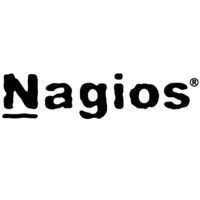Need advice about which tool to choose?Ask the StackShare community!
LogicMonitor vs Nagios: What are the differences?
Key Differences between LogicMonitor and Nagios
LogicMonitor and Nagios are both popular IT infrastructure monitoring solutions. While they share some similarities, there are several key differences that set them apart.
Scalability and Ease of Use: LogicMonitor is known for its scalability and ease of use. It can easily monitor a large number of devices across multiple locations, making it suitable for enterprise-level deployments. On the other hand, Nagios requires more manual configuration and may not scale as well for larger environments.
Monitoring Capabilities: LogicMonitor offers out-of-the-box support for a wide range of technologies and devices, including cloud services, virtualization platforms, and network devices. It provides pre-configured monitoring templates and can automatically discover and monitor new devices. Nagios, on the other hand, requires manual configuration for each device and technology, making it more time-consuming and less flexible.
Alerting and Notification: LogicMonitor provides flexible and customizable alerting capabilities. It allows users to define their alert criteria and escalation paths, and supports notification channels like email, SMS, and integrations with collaboration tools. Nagios also offers alerting and notification features, but they may require more manual configuration and lack some of the flexibility offered by LogicMonitor.
User Interface: LogicMonitor provides a modern and intuitive web-based user interface. It offers customizable dashboards, widgets, and reports, making it easy to visualize and analyze monitoring data. Nagios, on the other hand, has a more basic and less user-friendly interface, requiring more technical expertise to navigate and interpret the monitoring data.
Automation and Integration: LogicMonitor offers extensive automation and integration capabilities. It provides a REST API for programmatically interacting with the system, and supports integrations with popular tools like CMDBs, ticketing systems, and IT service management platforms. Nagios also offers some automation and integration options, but they may require more manual configuration and customization.
Support and Community: LogicMonitor provides comprehensive support, including 24/7 customer support, documentation, training resources, and a user community. It also offers regular product updates and enhancements. Nagios, on the other hand, has a large and active user community with many available plugins and extensions, but official support options may be more limited.
In summary, LogicMonitor offers a scalable and user-friendly solution with comprehensive out-of-the-box monitoring capabilities, while Nagios may require more manual configuration and customization but has a large user community and plugin ecosystem.
- free open source
- modern interface and architecture
- large community
- extendable I knew Nagios for decades but it was really outdated (by its architecture) at some point. That's why Icinga started first as a fork, not with Icinga2 it is completely built from scratch but backward-compatible with Nagios plugins. Now it has reached a state with which I am confident.
Pros of LogicMonitor
- Auto discovery5
- Fast deployment5
- Agentless3
- Awesome support3
- Very extensible3
- Strong Performance1
Pros of Nagios
- It just works53
- The standard28
- Customizable12
- The Most flexible monitoring system8
- Huge stack of free checks/plugins to choose from1










































